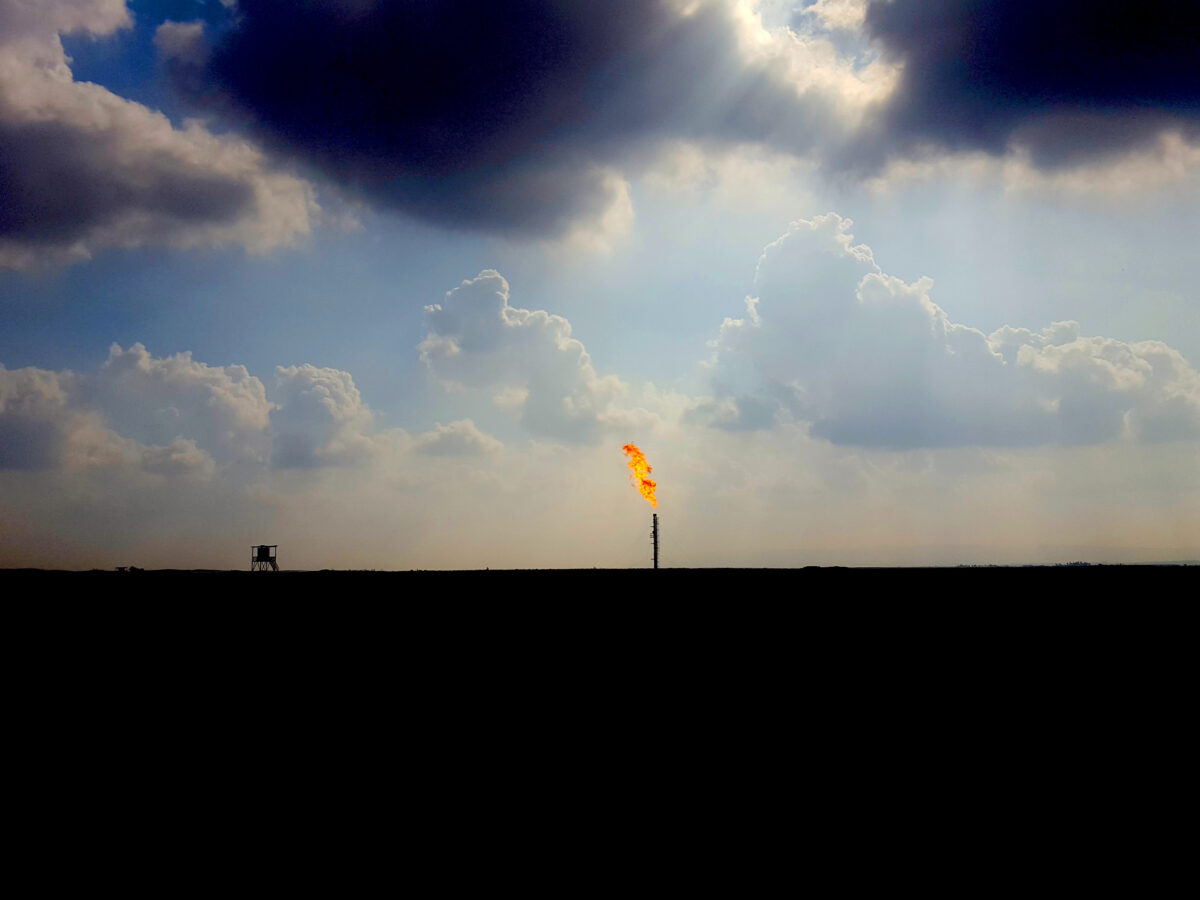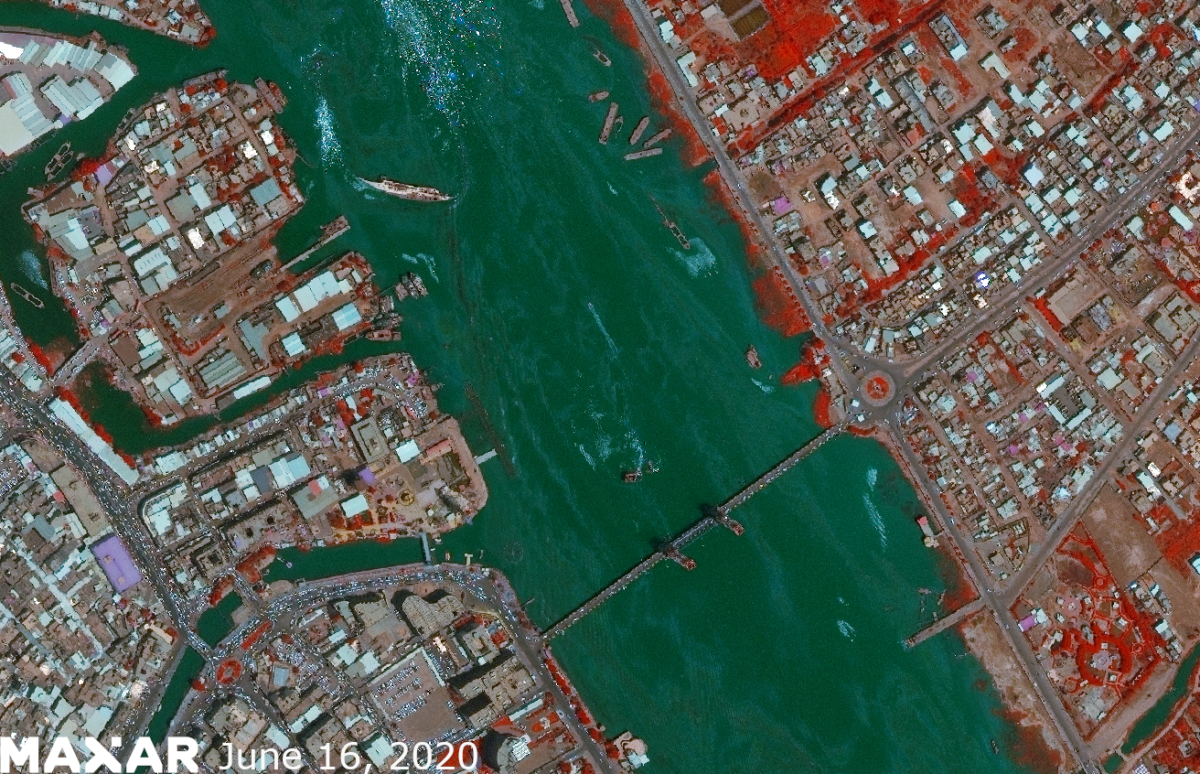The Islamic State going DIY, the Telskuf offensive
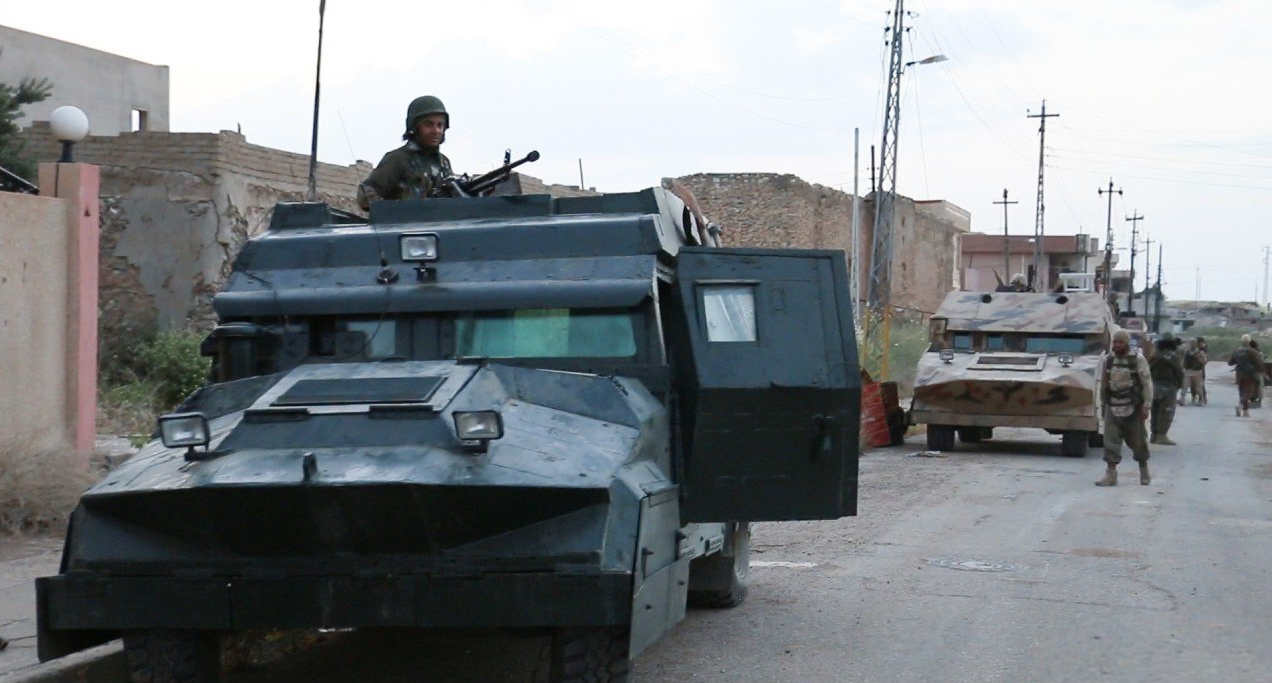
Just six days after the release of the now infamous footage showing fighters of the Islamic State fighting, failing and getting killed while storming Peshmerga positions North of Mosul, the Islamic State made another attempt at taking Peshmerga positions on the 3rd of May 2016 near the Assyrian town of Tesqopa (or Telskuf, Tel Eskof, Tel Asqof or Tel Asqaf in Arabic). The result of this attack received worldwide attention as the resulting battle saw the death of a U.S. serviceman stationed there as part of Navy SEAL unit sent to protect this part of Iraq from further Islamic State attacks.
As was the case with the attack on the 16th of December 2015 near Naweran, the Islamic State published its own images taken both prior and during the attack. This has again led to the strange situation where defending Peshmerga troops publish images of killed Islamic State fighters first, followed by an Islamic State photo report showing these exact same soldiers very much alive while preparing for battle shortly after. The results of the battle, and the fact that most of the Islamic State contingent was wiped out, makes it unlikely any Islamic State video covering the attack will every be released.
Contrary to similar offensives conducted by the Islamic State North of Mosul, often featuring its fighters operating in junction with heavily modified armoured fighting vehicles (AFVs), the initial phase of the assault on Telskuf was actually successful. Not only did the Islamic State breach the defenders’ positions on several fronts, its fighters also managed to enter and take control of large parts of the town. This is where their success story ends however, as a counterattack carried out by Peshmerga forces and U.S. Navy Seals with heavy U.S. air support annihilated the Islamic State’s armoured fighting vehicles and troop concentrations, allowing Peshmerga troops to retake the town as quickly as it was lost. The last pockets of remaining Islamic State fighters hiding in the town were said to have been cleared later the same day.
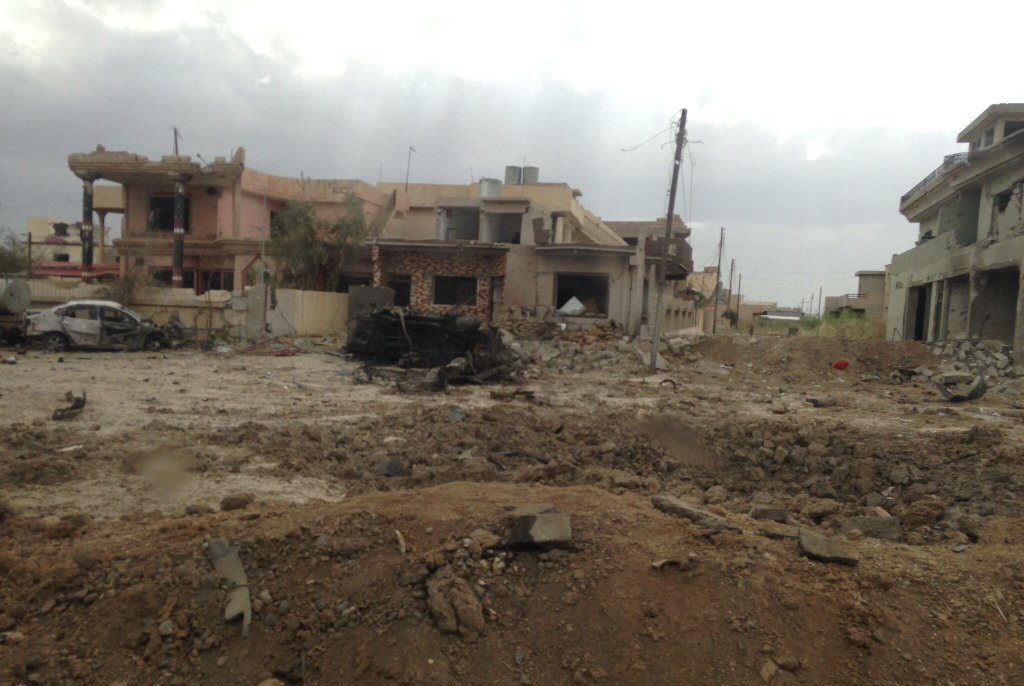
The attack on Telskuf was spearheaded by the ‘Storming Battalion – Abu Laith al-Ansari’s Sector’, further supported by at least ten vehicle-borne improvised explosive devices (VBIEDs) from the ‘Suicide Battalion’. Interestingly, the ‘Storming Battalion’ designates its formations as ‘Sectors’, each ‘Sector’ being responsible for operating in its designated area. The formation leading the attack on Telskuf was named in honour of the former Wali of Mosul Abu Laith al-Ansari, which was killed by a U.S. airstrike back in November 2014. Several military formations would be named after him, including the Abu Laith al-Ansari Brigade. The ‘Storming Battalion’ was also responsible for the failed offensive near Naweran, involving the crew of Abu Ridhwan and the now infamous Abu Hajaar. The ‘Sector’ responsible for the attack remains unknown however. No major attacks like these are believed to have taken place since the offensive near Naweran in December 2015, which should have given the ‘Storming Battalion’ plenty of time to rethink their strategy.
The major problems encountered during (previous) ‘Storming Battalion’ attacks North of Mosul were serious enough to deter any military force from carrying out such attacks in the first place. But with plenty of armoured fighting vehicles and fighters to spare, the Islamic State apparently does see these attacks as justifiable. The major obstacle the ‘Storming Battalion’ usually runs into are the well-fortified Peshmerga positions they are intend to capture. These positions, often located on the high-ground, forces the armoured fighting vehicles to drive through open fields while fully exposed to RPG, ATGM and tank fire from the Peshmerga. With most of the vehicles already knocked out by the time they arrive here, those remaining are then blocked by a huge trench often surrounding Peshmerga positions, which can only be crossed by bridgelayer or by filling it with dirt. While all of this is going on, the US-led coalition is often already present over the battlefield, striking the attackers with its aircraft and unmanned aerial vehicles (UAVs).
While Wilayat Ninawa (Mosul) scores best among all Wilayats of the Islamic State when it comes to air defence, the anti-aircraft artillery it operates is only of real use against low-flying helicopters and slow-flying aircraft. The speed of fast jets and the height they’re flying at makes it extremely unlikely any will ever get hit over the skies of Iraq and Syria. Interestingly, the Islamic State set up an independent battalion for air defence tasks in Wilayat Ninawa. The ‘Wilayat Air Defence Battalion’ was first paraded through Mosul back in March 2015 and again made an appearance when it was shown trying to bring down U.S. (E)P-3s used for intelligence gathering and electronic warfare over Mosul by using 122mm D-30 howitzers.
But instead of assigning the ‘Wilayat Air Defence Battalion’s assests to the ‘Storming Battalion’ as they go out on their mission, the ‘Storming Battalion’ is responsible for its own air defence. During the past attacks, including the one near Telskuf, this has meant that air defences consisted of nothing more than 14.5mm and single-barreled 23mm anti-aircraft guns installed on pickup trucks. While the anti-aircraft guns of the ‘Wilayat Air Defence Battalion’ are unlikely to bring down any fast jets, it could at least deter coalition aircraft with its heavier 37mm, 57mm and 122mm (anti-aircraft) guns.

The strength of the ‘Storming Battalion’ during the attack on Telskuf is said to have consisted of more than 300 fighters supported by several dozens of up-armoured AFVs and pickup trucks. The remains of least 154 Islamic State fighters were counted as of the 6th of May 2016, with at least 25 AFVs and pickup trucks confirmed to have been destroyed or captured. In return, the Peshmerga lost at least ten fighters (but likely more) and one U.S. Navy Seal was also killed in action when an RPG hit the armoured SUV he was sitting in. Ten to fifteen Navy Seals were believed to have been present during the counter-offensive, footage of which can be seen here. The casulties among the Assyrian militia also defending the town are unknown.
In typical fashion, the attack was preluded by a barrage of artillery and mortar fire on defensive positions around the town. The first wave of VBIEDs from the ‘Suicide Battalion’ followed about an hour later, clearing the way for the first elements of the ‘Storming Battalion’ which arrived soon after. The attack was said to have come from at least three, possibly four directions, with more than ten VBIEDs being used in total. Apart from using bulldozers to fill trenches with sand to allow vehicles to cross, the ‘Storming Battalion’ now also employed a dedicated bridgelayer. This vehicle was not seen in any footage however, making it unknown if a real armoured vehicle-launched bridge (AVLB) captured in Mosul or a DIY contraption was used for this task. To give a clear indication of the width of some of these trenches, the main trench around Naweran with an up-armoured ‘Storming Battalion’ bulldozer on the right can be seen below. This bulldozer was to fill the huge trench with sand while under heavy fire from Peshmerga positions nearby and unsurprisingly was knocked out before completing its task.
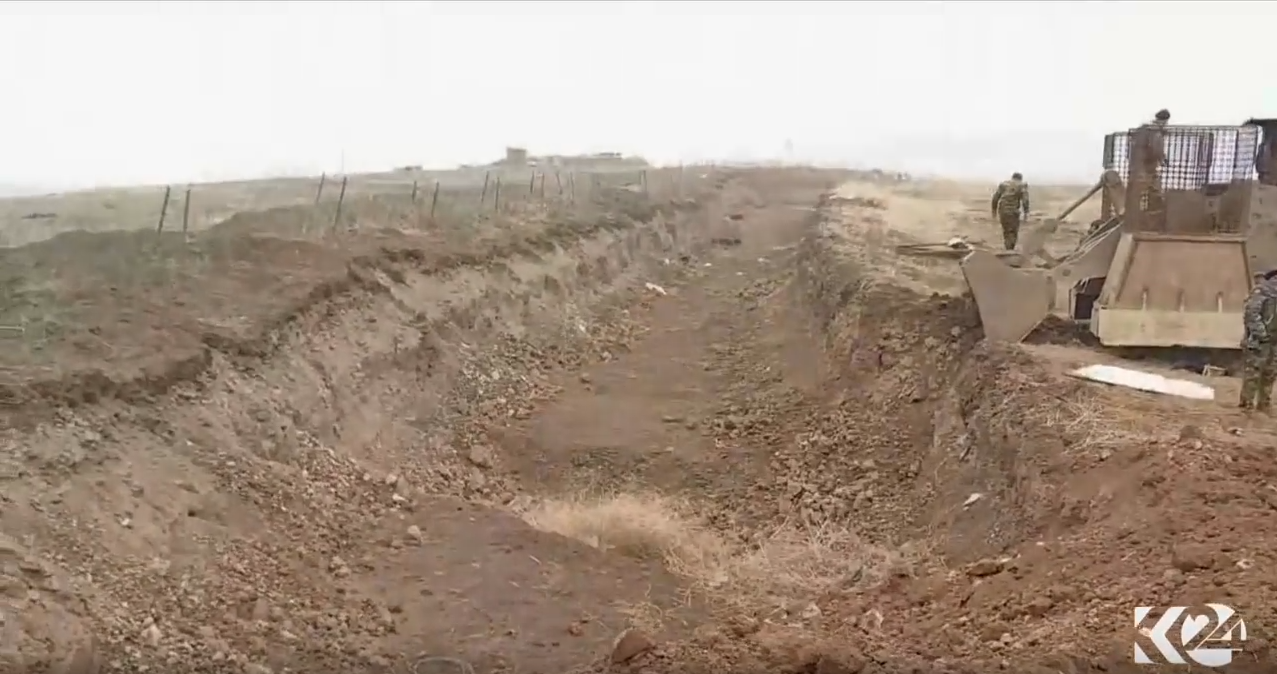
Faced with a nummerically superior enemy, the defenders made the choice to retreat rather than defend their positions to the last bullet. Their organised retreat allowed them to reorganise on the outskirts of Telskuf and then counterattack with U.S. ground and air support. This decision paid off hugely, and limited the casualties on the side of the Peshmerga. If the defenders were to remain in the town, they would undoubtedly have been beaten back by the superior numbers of the ‘Storming Battalion’. The ensuing fight would also have taken place in Telskuf itself, which would have been thoroughly wrecked by U.S. airstrikes as a result. Instead, the ‘Storming Battalion’ advanced further into Peshmerga held territory after capturing large parts of the town, exposing itself to the U.S. airstrikes in open ground, leading to huge losses on their side. The remains of an Islamic State convoy, including a single M1114 and several pickup trucks, can be seen below.
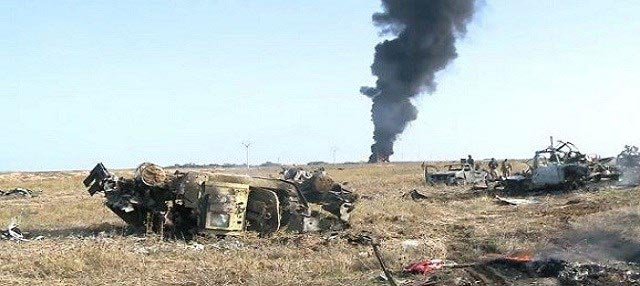
The armoured fighting vehicles of the ‘Storming Battalion’ were externally similar to those used in the attack on Naweran on the 16th of December 2015. The photo report released by the Islamic State covered the main assault group, which was better equipped than the other groups who took part in the offensive. The composition of AFVs of the main assault group was roughly the same as that of the group that assaulted Naweran, this time consisting of one up-armoured MT-LB, at least five up-armoured M1114s, several Badger ILAVs and armed pickup trucks.
Several ‘improvements’ over previous iterations of the M1114s are apparent, all now boasting angled armour to better protect the front of the vehicle against large-calibre machine guns and RPGs. A hatch for better access to the engine was also cut out in the front. Interestingly, at least two of the M1114s sported firing ports for assault rifles or light-machine gun in use with the crew, the lack of which proved ‘unfavourable’ during the attack on Naweran. The firing port in the front right side window was retained, allowing an additional gunner to sit in the front. The M1114’s doors on at least one of the vehicles were replaced by DIY armoured doors. In common with previous versions, all up-armoured M1114s featured a cabin over the body of the vehicle, allowing for the carriage of up to three fighters. At least one vehicle was armed with a Chinese 12.7mm W85 heavy machine gun, also seen during the attack on Naweran on two of the ‘Storming Battalion’s’ vehicles.
In typical DIY fashion, none of the vehicles are exactly the same. Confusingly, some of the vehicles were painted in black, a colour normally seen on AFVs operated by the ‘Shield Battalion’. The black-painted AFVs participating in the assault on Telskuf were all believed to have been subordinate to the ‘Storming Battalion’ however, which normally camouflages its vehicles with colours more adaptive to the local terrain. Two of the up-armoured M1114s that participated in the attack on Telskuf can be seen in the image below, with one of the M1114s used during the assault on Naweran seen in the bottom for comparison.
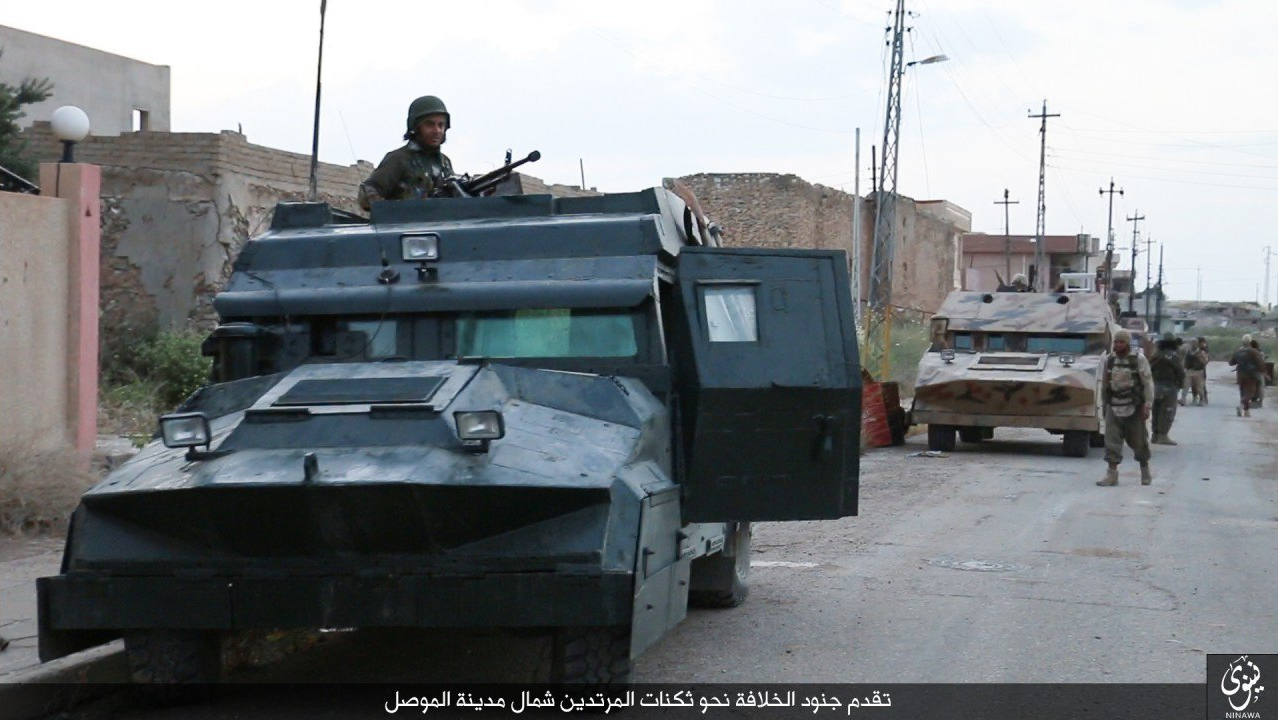

Another image shows the same row of vehicles but now photographed from the other side. The vehicle seen next to four Islamic State fighters in front is the up-armoured MT-LB, which would later be captured intact by the Peshmerga. Both of the M1114s visible come with a ladder inside their compartment to allow the crew to storm Peshmerga positions located on high ground. Two of the VBIEDs of the ‘Suicide Battalion’ can be seen on the right. These vehicles, always painted in black, are often serialled, the vehicle on the right being ‘502’. The image at the bottom shows another three VBIEDs, the vehicle in front serialled ‘1004’. One of the VBIEDs failed to detonate its deadly load and was later captured intact.


Having access to the large amount of equipment and gear the Iraqi Army left behind as they fled Mosul, the soldiers of the ‘Storming Battalion’ are among the best-equipped fighters of the Islamic State. The relatively sophisticated weaponry and large amounts of munition they bring with them don’t make up for a lack of training and combat experience however, which became painfully clear during the attack on Naweran, involving the likes of Abu Hajaar and Abu Abdullah.

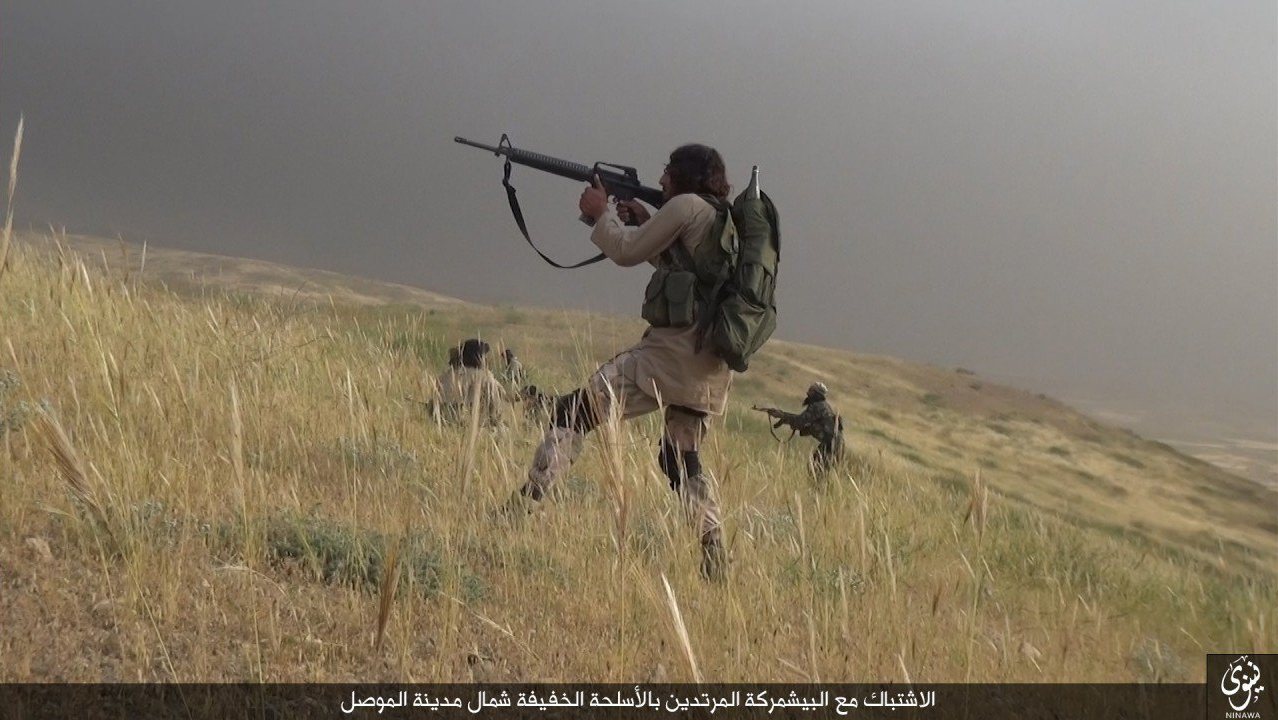
While the ‘Storming Battalion’ thus managed to achieve its initial objective, it was soon left to the mercy of the F-15Es and A-10s from the U.S. Air Force and AH-64 Apaches from the U.S. Army. Two UH-60 Blackhawks also participated to retrieve the body of the U.S. Navy Seal that was killed in action. Unable to defend itself against aerial attacks, the whole ‘Storming Battalion’ contingent was then wiped out in open ground, with the crews of some vehicles leaving their vehicles and fleeing the scene.


The next image shows one of the 14.5mm KPV armed pickups firing against U.S. aircraft. The installation of the 14.5mm KPV allows the gunner to only fire one shot at the time, making this weapon practially useless against anything but ground targets. This particular pickup was part of a convoy that was later hit by an airstrike while on the main road of Telskuf, resulting in the destruction of the vehicle.


A ‘pickup of the ‘Storming Battalion’ captured by Peshmerga forces. The seal, present on most vehicles operated by armoured formations operating out of Mosul, reads: Wilayat Ninawa- The Soldiers Storming Battalion – Abu Laith al-Ansari’s Sector. A brightly painted Islamic State operated M1114 after being captured by the Peshmerga can be seen in the bottommost image.
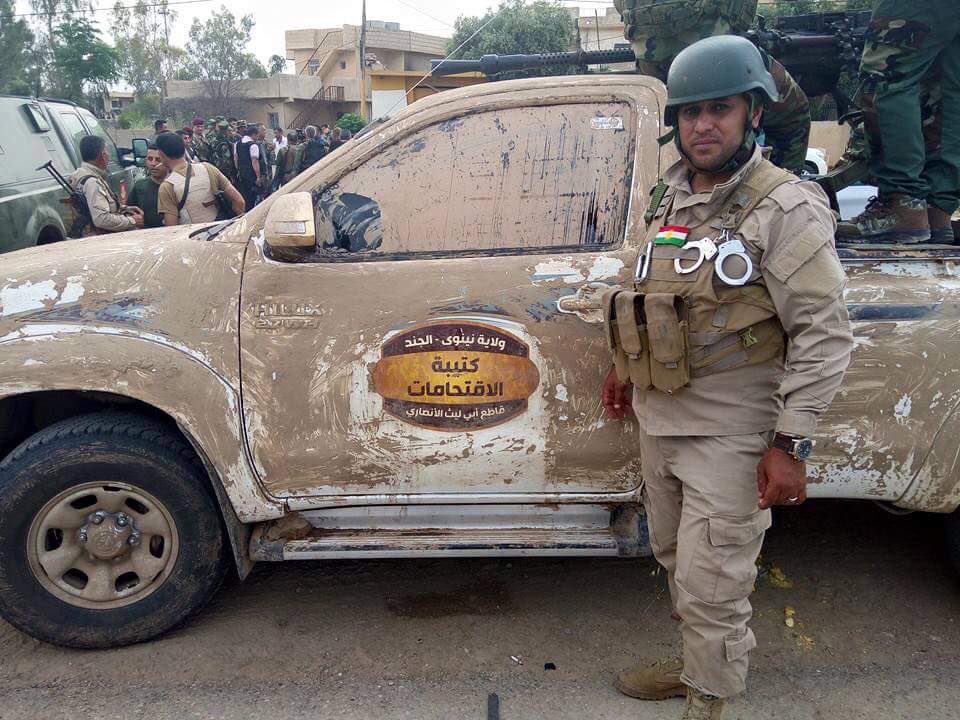

The main spoils were later displayed in the town itself, including some of the vehicles that participated in the attack. The up-armoured MT-LB can be seen on the right, next to another up-armoured M1114. The bottommost image shows another Tabuk (Zastava M70) rifle converted to fire DIY rifle grenades. This weapon was used by Abu Ridhwan in the video published by VICE, and now appears to have been fitted with a handgrip for better aiming.


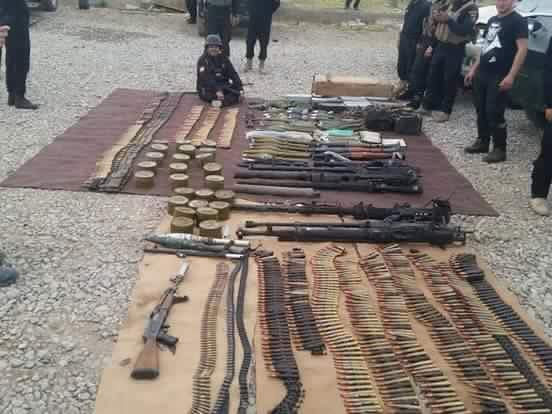
One of the ‘Storming Battalion’s’ up-armoured M1114s wrecked after the failed offensive can be seen below. This image clearly shows the professional-looking armoured cabin, complete with two firing ports in front and two viewing ports on the side. The firing port of the gunner sitting next to the driver can be seen in the bottommost image. Although this example is very similar to one of the M1114s seen in the images above, the vehicle is slightly different in certain details.
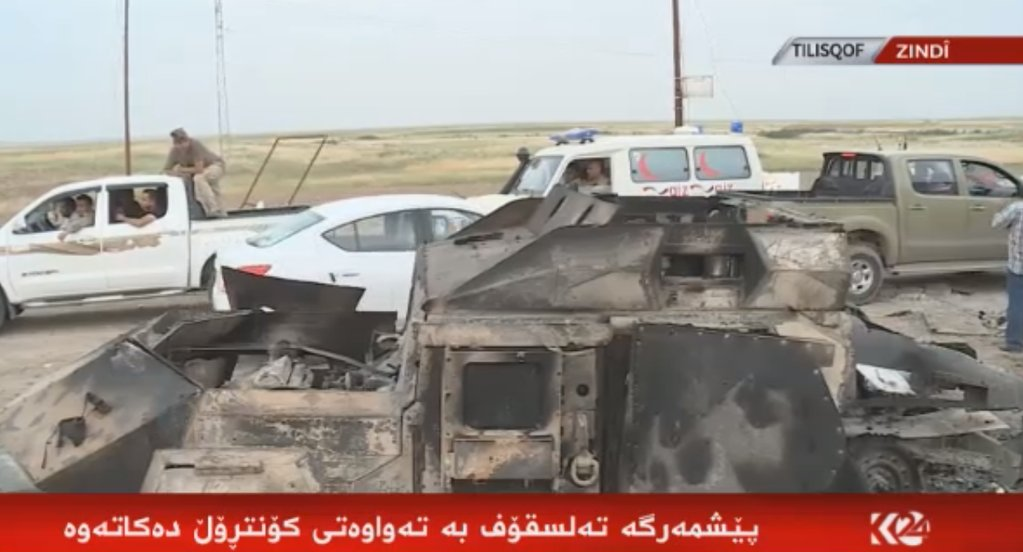
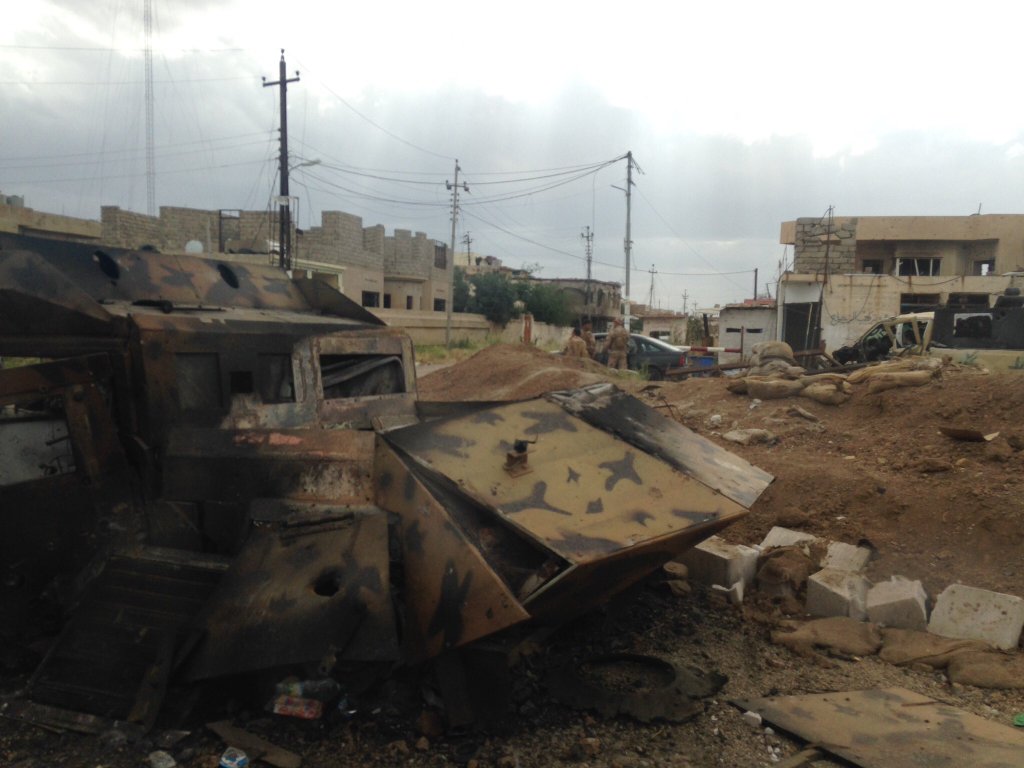
While previous attacks resulted in defeat after defeat, this attack is believed to have been the first of its kind to have proven succesful during its initial stage. The DIY modifications to the Islamic State’s vehicle park and the tactics employed by these vehicles showed that at least some lessons were learned from their previous failures. However, the presence of coalition airpower over the plains of Iraq prevents the Islamic State from using armoured fighting vehicles to their full advantage. While the initial phase of this attack can be deemed a success, the resulting defeat due to U.S. airstrikes makes this attack nothing less than a waste of men and materiel in the end.
The past two years have shown that advancing beyond the currently-held territory North of Mosul is not possible. Even when successfully overrunning Peshmerga positions, coalition airpower will always be decisive in this region of Iraq. The Islamic State can throw everything it has into battle, it can use tactics not seen before and ever more advanced DIY AFVs, but it won’t be able to counter the guided-bombs and missiles launched at them. The fact that the Islamic State’s military leadership in Mosul has so far failed acknowledge this has once again resulted in the death of roughly 150 fighters (as well as the loss of a significant amount of equipment), and as the situation in Western Iraq appears to be anything but poised to change anytime soon, further offensives and large losses of life are to be expected in the future.
Images two and twenty-two by Operation Valhalla.
